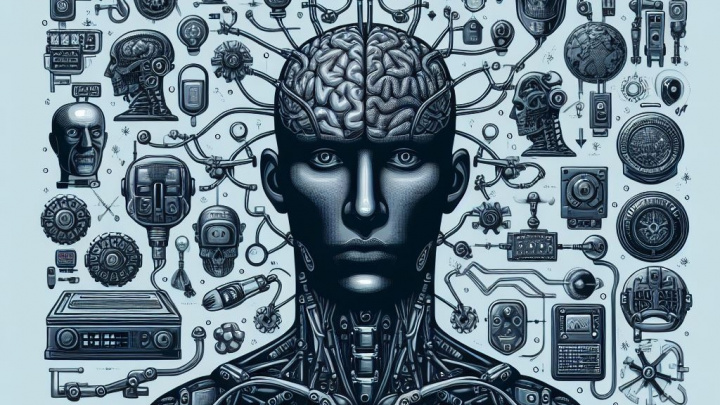The Paradox of Skill: Why AI Masters Chess But Stumbles on the Stairs
Imagine a machine capable of defeating the world's greatest chess grandmaster, composing symphonies, or proving complex mathematical theorems. Now, picture that same machine struggling to simply walk across a room without bumping into furniture, or failing to reliably pour a cup of coffee. This jarring contrast lies at the heart of Moravec's Paradox, a fundamental observation in artificial intelligence and robotics, first articulated by Hans Moravec and others in the 1980s. It reveals a surprising inversion of difficulty between humans and machines: what we find hard, they often find easy, and what comes naturally to us can be monumentally challenging for them. Why is this the case, and what does it tell us about the nature of intelligence itself?

The Core Conundrum: Easy vs. Hard, Flipped
At its core, Moravec's Paradox highlights a stark dichotomy. High-level reasoning – tasks like strategic planning (chess), symbolic manipulation (mathematics), or abstract logic – which require significant conscious effort and years of training for humans, can often be replicated by computers with relatively modest computational resources. Algorithms can follow rules, explore vast possibility spaces, and optimize outcomes within well-defined domains with remarkable efficiency.
Conversely, the low-level sensorimotor skills that even a toddler performs effortlessly – recognizing a face in a crowd, navigating uneven terrain, picking up an unfamiliar object, maintaining balance – prove extraordinarily difficult and computationally expensive to replicate in machines. These are tasks we perform intuitively, largely unconsciously, relying on a foundation of skills honed over millions of years of evolution.
Unraveling the "Why": Evolution and the Nightmare of Reality
The most common explanation stems from evolutionary timelines. Our sensorimotor skills represent the ancient bedrock of animal intelligence. Perception, mobility, and interaction with the physical world have been under constant refinement for hundreds of millions of years. These abilities are deeply woven into our neural architecture, optimized to an incredible degree for navigating the complexities of the real world.
Abstract reasoning, language, and mathematics, while hallmarks of human intelligence, are far more recent evolutionary developments – mere tens or hundreds of thousands of years old. They haven't had the same eons of optimization and are less deeply ingrained, making their underlying logic potentially easier (though not trivial) to reverse-engineer and implement algorithmically.
But there's more to it than just evolutionary age. Replicating sensorimotor skills is computationally nightmarish because the physical world is inherently messy, unpredictable, and requires processing a torrent of real-time, noisy sensory data. Consider walking: it involves constant visual scanning, processing tactile feedback from the feet, maintaining dynamic balance by integrating signals from the inner ear, predicting surface friction, and making micro-adjustments – all simultaneously and adaptively. This requires:
- Massive Parallel Processing: Handling diverse sensory inputs concurrently.
- Navigating Ambiguity and Uncertainty: Dealing with incomplete information, sensor noise, and unpredictable events.
- Implicit Physical Intuition: A vast, unstated understanding of physics ("common sense") – how objects behave, the effects of gravity, the properties of materials.
- Embodied Cognition: Our intelligence isn't just in our brain; it's deeply intertwined with our physical body and its interactions with the environment. Traditional AI often lacks this grounding.
Moravec's Ghost in the Modern AI Machine
The paradox remains strikingly relevant even amidst today's AI breakthroughs:
- Deep Learning's Double Edge: While deep learning has revolutionized perception tasks like image and speech recognition (overcoming *some* earlier perceptual hurdles), building robots with human-like dexterity, adaptability, and robust physical interaction skills remains a frontier challenge. Robots still struggle with manipulating unfamiliar objects or adapting to unexpected physical situations.
- Reinforcement Learning's Climb: Techniques like reinforcement learning allow AIs to learn complex behaviors through trial and error, showing promise in robotics. However, they often require vast amounts of training data (either real or simulated) and can struggle to transfer learning effectively from simulation to the unpredictable real world (the "sim-to-real gap").
- The Eloquence of Large Language Models (LLMs): Models like ChatGPT showcase stunning capabilities in language, logic, and code generation – classic examples of high-level reasoning. Yet, they possess zero genuine understanding of the physical world derived from sensory experience. They can describe walking down stairs flawlessly but have no embodied comprehension of balance, gravity, or the feel of a step – a modern, stark manifestation of the paradox.
Broader Ripples: Automation, AGI, and Rethinking Intelligence
Moravec's Paradox has significant implications beyond the lab:
- The Future of Work: It suggests that jobs requiring high-level abstract reasoning (e.g., data analysis, programming, financial modeling) might, counter-intuitively, be more susceptible to automation in the near term than jobs demanding physical dexterity, situational awareness, and interaction with the unpredictable physical world (e.g., plumbing, elder care, construction, craft trades).
- The Quest for Artificial General Intelligence (AGI): The paradox strongly implies that achieving human-like AGI won't just be about scaling up computational power for abstract thought. It will likely require cracking the code of sensorimotor intelligence and integrating it seamlessly with reasoning – creating embodied AI that learns through physical experience.
- What is "Hard"? It forces us to question our assumptions about intelligence. Is abstract thought truly the pinnacle, or is the effortless mastery of the physical world a deeper, more fundamental form of intelligence that we often take for granted?
Conclusion: An Enduring Insight
Moravec's Paradox is more than just a historical footnote; it's an enduring insight into the different architectures of biological and artificial intelligence. It highlights the immense complexity hidden within our seemingly simple physical abilities and underscores the challenges in creating truly general-purpose intelligent machines. While AI continues to achieve superhuman feats in specific, often abstract domains, the everyday miracle of human (and animal) physical competence serves as a constant reminder of the vast landscape yet to be conquered. Understanding this paradox is crucial not just for appreciating our own capabilities, but for guiding the future trajectory of artificial intelligence research toward systems that can truly perceive, act, and learn within the richness of the real world.